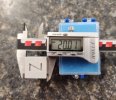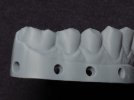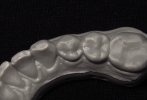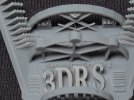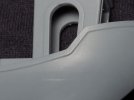How often do I need to print the 20mm cube or other print objects to verify the calibration for lab models?
Definitely any time you disassemble the machine, drop the build plate/jar the printer, or are trying a new resin; beyond that, it's up to you, and how proactive you want to be. I would just set a schedule and stick to it so you can gauge the scope of any issues that you detect after the fact; i.e. if you do it every monday and you suddenly get a weird result, you know the issue can't impact cases printed more than a week ago.
Personally, we run at least one "standard battery" of cube + city for all of our printers every monday under normal conditions; if I'm suspect of a printer's condition, I'll run it at least once a day, possibly including one cube in every build if the parts are important or particularly dimension-critical.
Remember you don't need to necessarily run a 20mm cube as a 20mm cube; you can change the scale factor of a single part to save on material and print time. 0.75 factor gets you 15mm, 0.5 gets you 10mm, etc. Wouldn't go any smaller than 10mm, bigger cal cubes give more reliable feedback.
Tuyere, Have you tried the plant based resin? Im looking at the site now too. What do you use for models?
Easy doesn't really have a strong case for general use unless you're new to things and want to make nesting less challenging for yourself, imo. Easy to print and easy to clean up, but the material isn't really noteworthy or impressive otherwise. It's comparable to a generic entry-level hobbyist resin from Phrozen or similar, it's very forgiving. Some people do use it as their main resin- not for dental parts, just general printing- but imo if you're having issues getting successful prints, you should address that with experimentation and research, not compromising on the material.
RE: the plant-based aspect, anything eco-appealing with resin is more or less greenwashing, none of this stuff is recyclable or biodegradable after it's been cured, the process is inherently lousy for the environment and very wasteful. I don't love it, but it is what it is.
For general model-printing, Fast is their mainstay. It's a nice all-rounder and you can really lay down layers fast without running into delamination issues, hence the name.
Sculpt Grey would be my preference for very high-detail, precise models, like anything with dies; it's exceptionally dimensionally stable after printing, holds detail very well, and is reasonably-durable and straightforward to print. Has a lot of filler so it's not so easy as Fast. Sculpt Ultra is even nicer to work with but it has about as much filler as you can possibly cram into a resin so it needs slow print speeds with lots of dwell time so the super-viscous resin can flow where it needs to.
All that being said, I don't use ST for any dental printing, strictly because we run all DLP printers here, nothing LCD. The light intensity of DLP printing is a lot higher so the formulations fundamentally differ (there's more photoinitiator in LCD resins to compensate) and you can't just swap them between processes, LCD resins will badly overexpose with DLP printing and there are no established settings to use. They do make a DLP/SLA-compatible resin called Form that I do use for tools and functional parts around the lab, but it's not popular and you have to figure a lot of it out for your specific printer, so it probably isn't worth it for most DLP/SLA printing folks.
